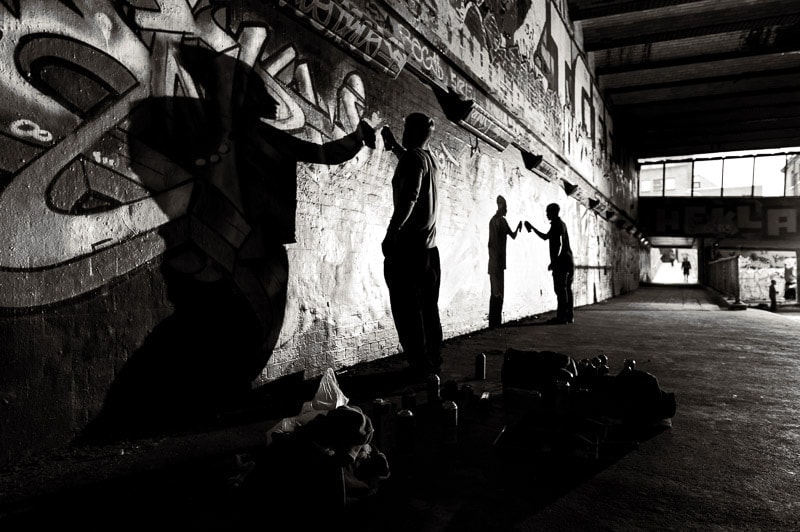A photographer does not need to have a camera at hand to be called as such, in fact, most of the time you take photos with your eyes, develop them in your mind and then, when you have your camera at hand, try to reproduce them.
Whether you live in a big or small city, you are constantly faced with endless situations worthy of being photographed: people, buildings, shop windows and everything that passes before your eyes, can become your next great photograph.
But, keep in mind that instinct and luck are not enough to obtain it, you will also need a lot of patience and, why not, read the article that I have for you today. Are you ready?
WHAT IS URBAN PHOTOGRAPHY?
Urban photography or "Street photography" is one of the most attractive and challenging disciplines that you will find as a photographer due to the large number of variables that you must handle around you.
Cities are a huge stage that constantly changes actors, scenery and stories. Every moment something new happens, which makes them an ideal place to go on a safari on the asphalt in search of immortalizing each of its scenes with only your camera in hand.
The difficulty of this type of photography is due to the fact that you must not only take a good photo, perform a correct measurement and exposure, and compose the photograph, but you must also do everything in a very short time, since if you delay, that moment only will have passed
And if you add to this that you must not only portray subjects, objects and situations, but you must also do so taking into account the architecture, culture, habits, customs and the characteristics of each of these.
You will have to handle a large number of elements and many of them at the same time if you want to get the best results. Anyway, do not worry that in practice there is the teacher. You know, as soon as you finish reading the article, go for a walk camera in hand.
If you want your photographs to stand out above the rest, you must capture the essence of each moment and work with all the available elements to enhance it and transmit it to the viewers.
How to get better photos in the city? Don't worry, keep reading.
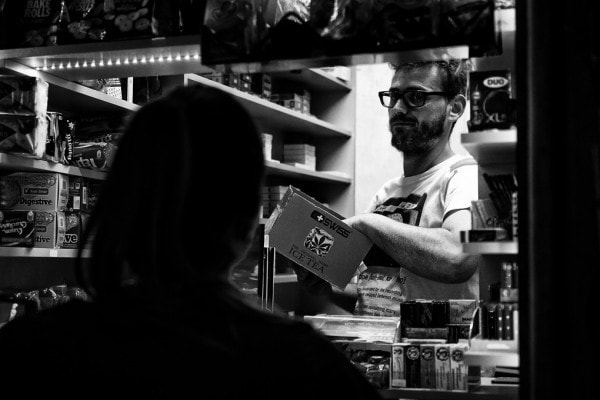
THE PROTAGONISTS
In this type of photography, you should not only focus on your protagonist, but also, you should combine it with the environment without it losing its "personality". Each person is a world, and your job will be to portray it in it.
As I told you in the article "16 ways to give prominence to your subjects" , every great story has a great protagonist and every great photograph, too. Lucky for you, unlike working in the studio, in street photography the people and characters are there waiting to be captured, you just need to be ready to do it.
But how? The challenge when taking photos of passers-by in a city is not to steal their photo with a telephoto lens, but rather the opposite: it is to work with them, so that they know that you are there and that you are going to take a picture of them. You will be surprised at the number of people who, if you are respectful, will be willing to collaborate with you.
The most important thing is that you lose your fear and encourage yourself to go out with your camera to hunt for photographs there.
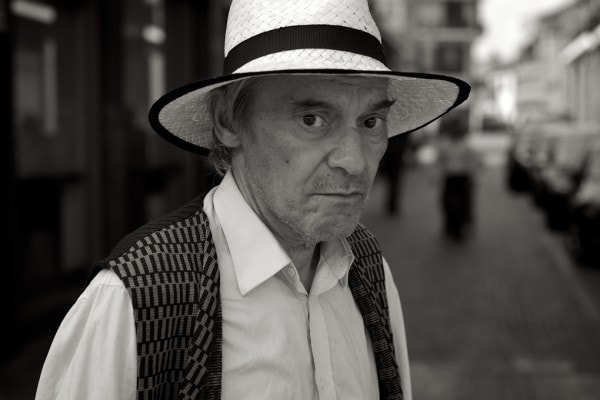
NECESSARY EQUIPMENT
It is almost an instinct for any photographer who is beginning in this beautiful art, to want to go out and photograph everything around them. But in order for you to enjoy this experience to the fullest, you must first prepare. Let's start at the beginning: the team.
Urban photography does not require large investments in equipment, your pockets can rest easy. Creating excellent urban photographs is not only the power of SLR cameras, with any "beginner" camera and even with your mobile phone camera you will be able to achieve amazing results. Although of course, the better or more professional your team is, the more spectacular the results will be.
As I mentioned before, the objective of this article is not only to give you tips on how to produce beautiful urban photographs, but also to lose your fear of taking them, so I recommend that you, no matter how tempted you may feel, leave your telephoto at home or do not shoot using the zoom too much if you have a compact camera in order to go unnoticed. The idea is to get up close to the subjects and work with them, not steal their photos.
So: How to assemble the backpack?
- Objective: Ideally, you should work with fixed focal length objectives (35 and 50 mm for example) since they are usually very bright, light, discreet, although due to their fixed focal length they are less versatile and will force you to get closer to people . In any case, if what you prefer is to have a more versatile lens, with any short variable range lens (the 18-55mm in the kit) you will be able to work comfortably. The ideal is to be able to cover all focal lengths, so if you have a wide-angle handy take it with you, it will help you in your compositions, but remember, until you break the barriers of shyness, the telephoto lens should stay at home.
- Flash: if you have a flash and a reflector or diffuser to disperse the light, take it with you, it is better to have it on hand than to need it and not have it. If you don't have a diffuser, don't worry, with a little imagination you can make one quick and easy. You do not believe me? Take a look at the following article: "DIY Photography: How to Assemble Homemade Photographic Accessories" .
- Tripod: Unless you plan to do some long exposure photography , leave the tripod at home this time. Remember that the idea is that you are comfortable and if you are heavily loaded, you will be more concerned with carrying all that weight and not losing anything than with doing what really matters: taking pictures.
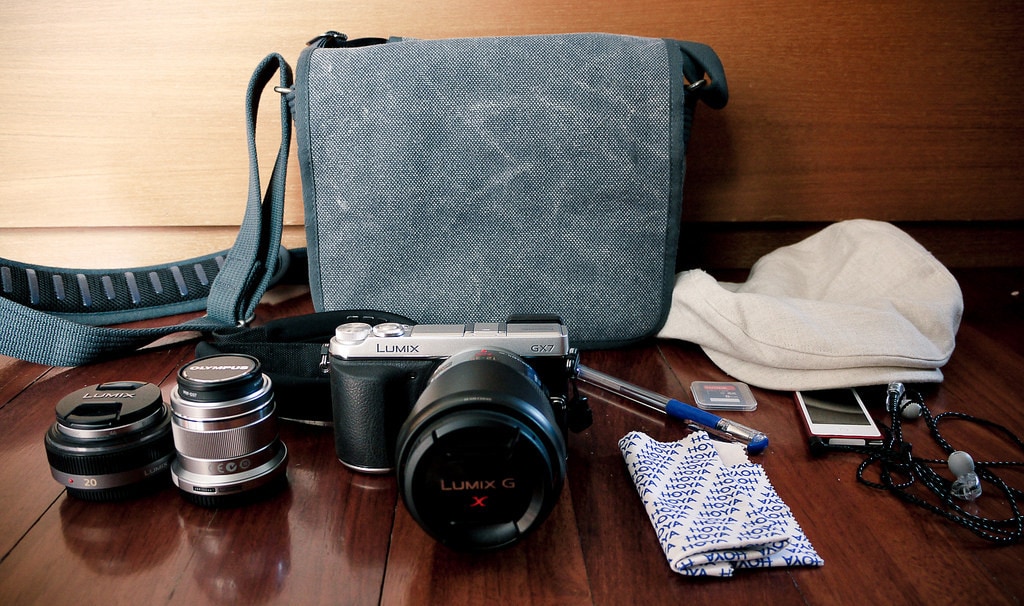
PRECAUTIONS
Cities are the scene of thousands of works that take place at the same time and are worthy of being photographed, but taking photos of strangers can be a risk, let alone meeting someone who owns what belongs to someone else who wants to give you a bad time. . This does not mean that you should not be encouraged to take your photographs, but rather to know the risks and that you can be alert.
Below I detail some of the problems that you could come across so that you are prevented:
1. Image rights:
Taking pictures of strangers on the street is not as easy as it seems, and not because of the act of taking a picture itself, but because there are certain rights that you must respect. The main one of these is the right to privacy of people, this means that you are not free to take and publish photographs of strangers, without their consent. In any case, this does not mean that you cannot take pictures of people on the streets, but you should take some precautions:
- Do not use the photos you take of them for commercial purposes.
- Respect the “models: If they ask you to delete a photo, do it. Especially if you have photographed a child.
- Try to avoid taking pictures of people that could be demeaning or damaging to their image. Although this is very difficult to assess, be respectful in order to avoid inconvenience.
- If you plan to go on a trip, find out beforehand about the customs and regulations in force regarding image rights and the customs of each country you visit. It can save you some headaches.
- Have some personal cards handy where you indicate how to contact you, your website, etc. in order to give the "model" a feeling of professionalism and convey peace of mind. You can also ask for their email so that you can send them the photo later.
However, there are certain situations that will not require you to request that these rights be assigned to you. Here I detail some:
- When the use you plan to give to the photos is editorial.
- When the person is not easily recognizable
- In the case of people or public figures, in public acts or in open places.
- When the interest pursued by the photographs is to inform, and said information is of public interest.
If you want a little more information about your rights and obligations as a photographer and that of your models, you can take a look at the following article: “Detailed Guide: How to Protect Your Photos on the Internet? Rights, Licenses and Contracts” .
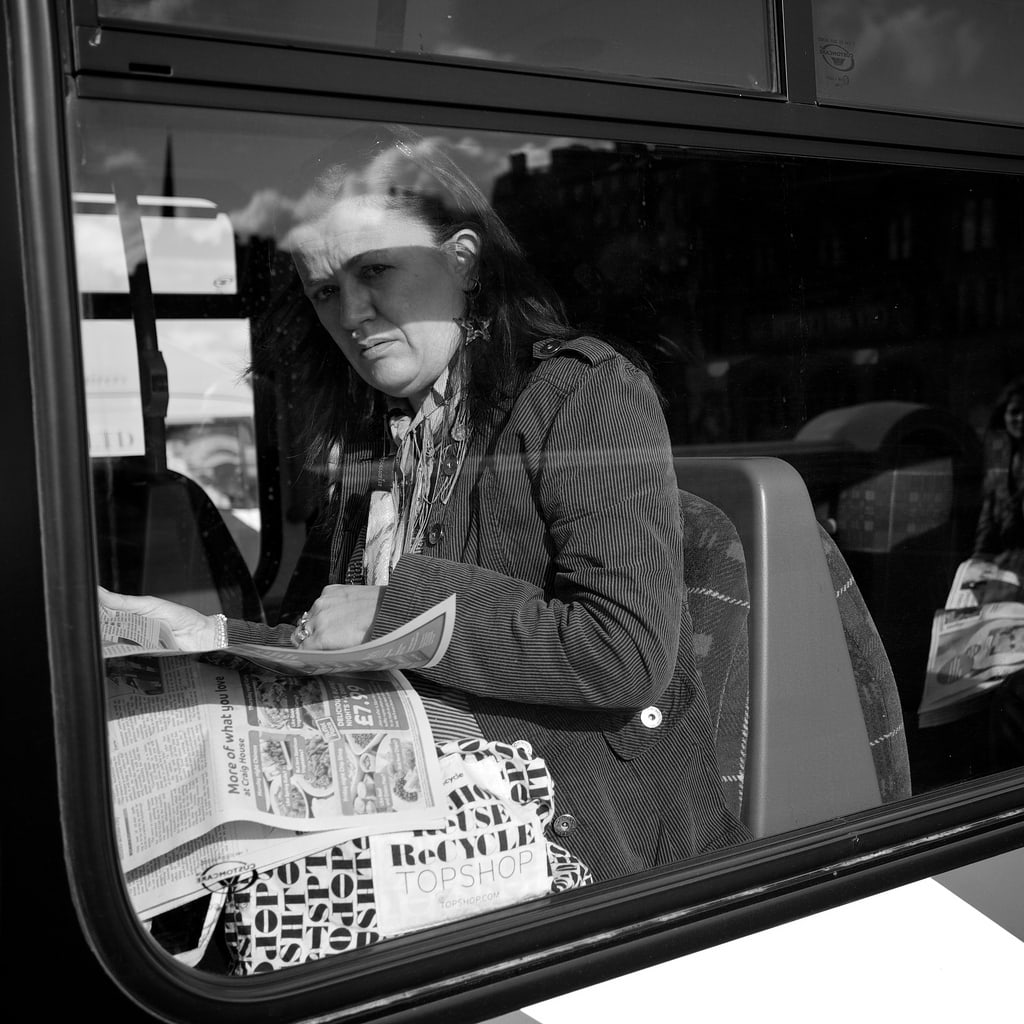
2. Reactions:
The idea of a photo safari through the city is nothing more than an activity for you to enjoy and have a really good time. As the idea that I propose is to interact with those people you want to portray: approach with a smile, ask for permission and explain to them what you are doing and, if necessary, show them the photos you just took of them.
Ideally, you can transmit tranquility to the protagonists so that they do not feel intimidated or uncomfortable, after all you want to get the best out of them.
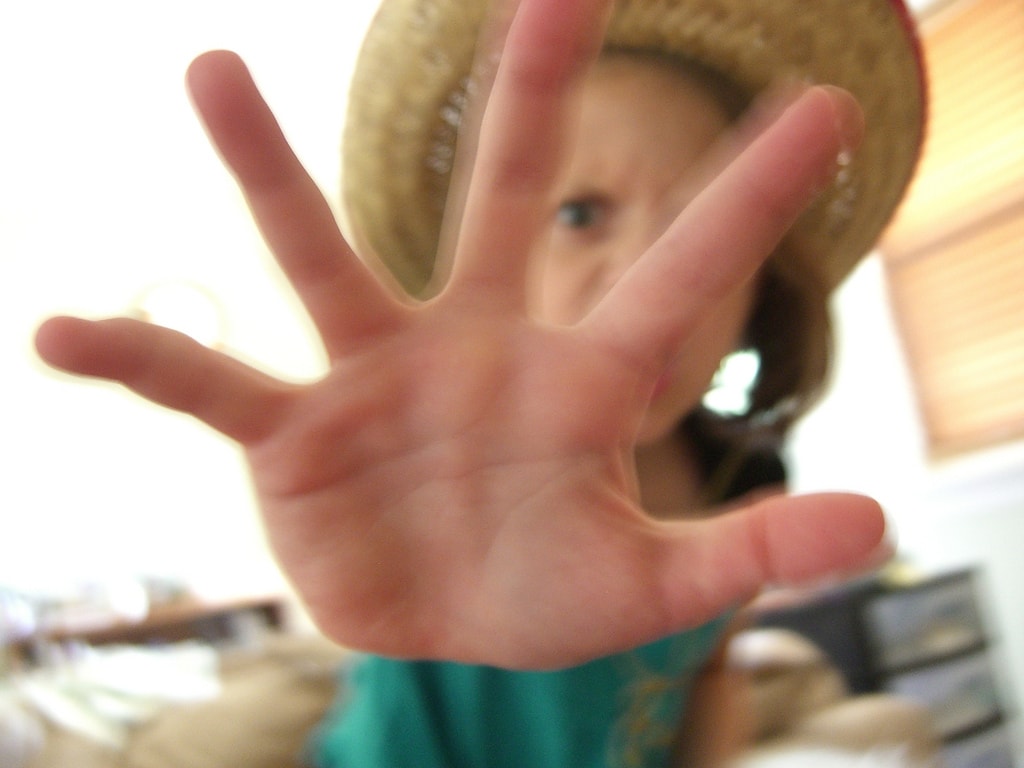
3.Thefts:
No one is exempt from having a bad time thanks to friends of others, and photographers even less. Whether you like it or not, you should know that you are an ideal target due to how expensive photographic equipment tends to be. This is why you better be prepared. The first thing is always to prevent, so I recommend that you take your time and read the following article: "Tips to Prevent the Theft of your Camera" .
You should not be afraid of going out to take photos, you just have to do it responsibly and having taken the necessary precautions so that you can do it calmly and focused on what you know how to do best: taking photos.
HOW TO PRODUCE BEAUTIFUL PHOTOGRAPHS OF STRANGERS ON THE STREET?
To get your first urban photographs, the first thing you should do is: lose your fear. From there you will only have to worry about enjoying and shooting your camera. Here are some tips to serve as a catalyst for your creativity and you can maximize it:
1. Arm yourself with courage: although you may be embarrassed to stop a stranger on the street and ask him to be your model, you should not be afraid, after all, you are not doing anything wrong.
2. Prepare your smile: the better empathy you achieve with your models, the better the photographs you take of them will be. Come closer and ask them if you can take some pictures of it. If they say no, don't worry, the city is full of potential protagonists. Being friendly and respectful will increase your chances of getting the photo you are looking for.
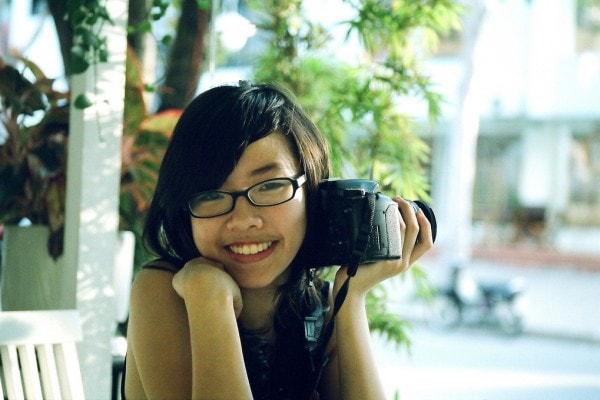
3. Go out and take baths of creativity: if you don't feel inspired, it doesn't mean that it's not a good day to go out and take photos. When inspiration hits you, it better find you working. Load your gear in your backpack and head out for a spin. Take a look at the following article if you think you are running out of ideas: “How to Get Very Creative Photos (When You Have No Ideas)” .
4. Friendly areas for photographers: if you enter a cafe and start taking pictures of whoever is sitting, they may feel a bit invaded in their privacy, but if on the contrary, you would have come across the same people in a square, a museum, a cathedral or a monument, your reaction will surely be different. There are places where people are used to seeing photographers doing their job. You can start with these sites until you lose your shyness and gain experience.
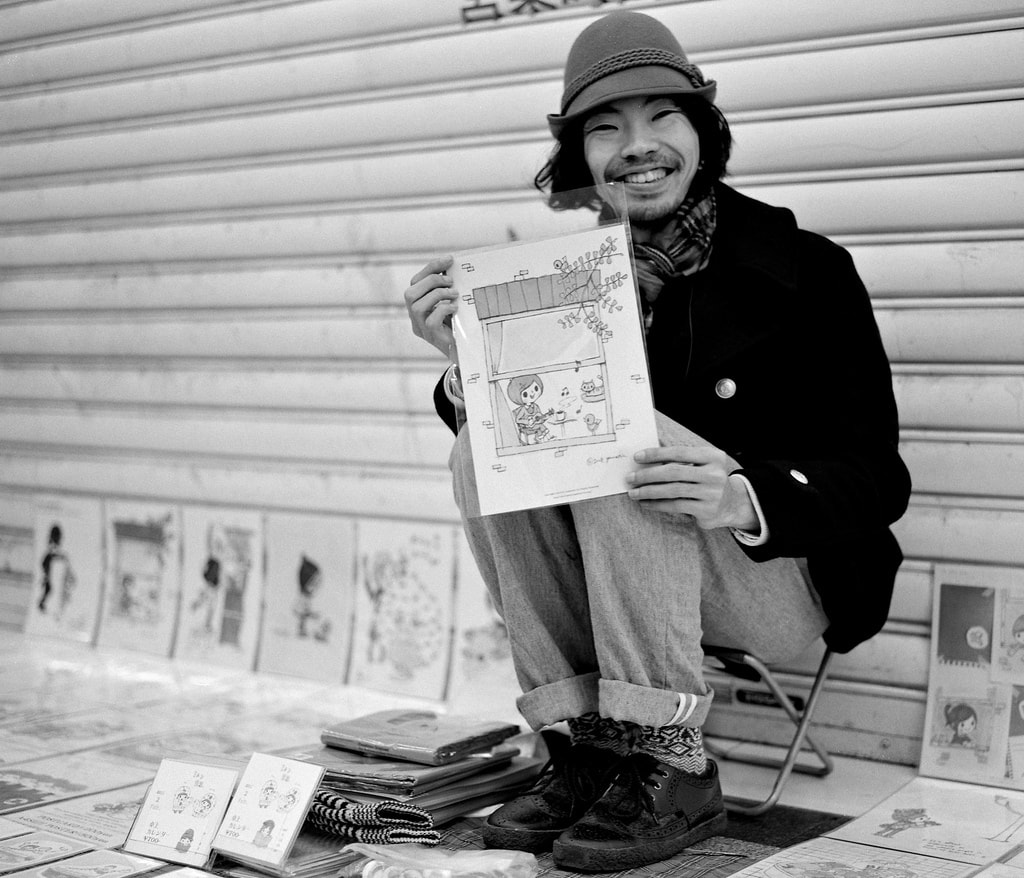
5. Get the most out of events: many activities are constantly taking place in cities that you can use as your theater of operations. Festivals, fairs in the squares, demonstrations, etc. They are an excellent opportunity for you to gain experience. Keep in mind that at these types of events, people won't be surprised to see a photographer documenting everything, so you'll feel more comfortable taking your photos.
6. Observe the environment: when you arrive at a place and before starting to shoot everything that crosses your path, spend some time analyzing everything that surrounds you so that you can imagine what elements you will use in your shots and which not. In this way, you will have a better chance of getting the photo you were looking for and not just the one you were able to get.
7. Anticipate the next photo: if for each photo you are going to take you must configure the parameters of your camera so that it is perfect, when you finish taking it, it is likely that the photo is no longer there. Try to anticipate your next photo and have the camera ready to shoot. Sounds difficult? The way to learn is by photographing. When the time comes, you will do this instinctively. In any case, I recommend that you take a look at the following articles: "Detailed Guide: How to Correctly Meter and Exposure Your Photographs" and "9 Tips and Tricks to Improve Your Photographic Composition" .
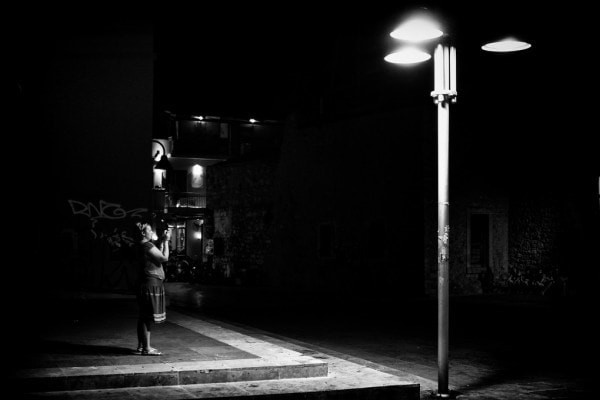
8. Observe the work of others: One of the best ways for photographers to learn is by observing and analyzing the work of others. Take advantage of the fact that, thanks to the Internet, you can review the work of thousands of colleagues without leaving your chair. Take 5 minutes to look at the urban photos in the following article: “The Untrained Eye [Urban Photos Gallery in Black and White]” and do a search on the main online photography sites like Flickr, 500px, etc.
9. Photos at all times: every hour in the cities has its particular charm: the lights, the colors, the shadows, the different tones and even the people change as they go by. As the clock ticks, the light conditions change. Take advantage of the charm of every hour to make your photos more spectacular. If you are not very familiar with the different types of light and how to take advantage of it as a creative element, I recommend that you read the following article: ” 23 Ways to Use Light as a Creative Element (For When You Are Not Inspired)” . Go ahead, go out and take photos at all times.
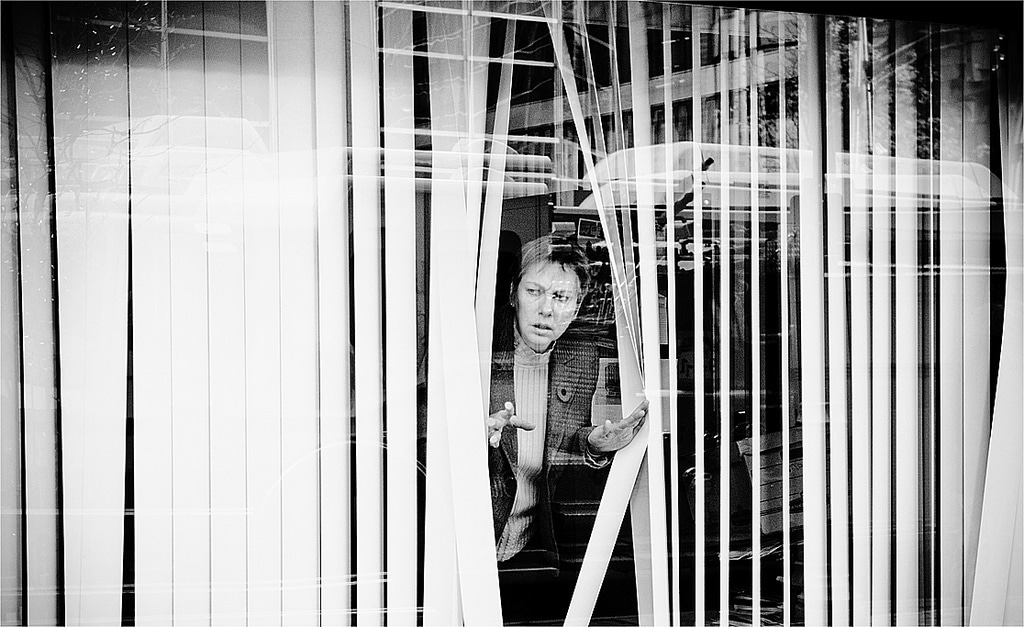
10. Arm yourself with patience: after each walk you may feel a little frustrated for not having been able to get that photo you had gone looking for. In urban photography there are very few factors over which you will have absolute control, in fact, almost none. Do not get discouraged, and keep going out in search of that photo that is in your mind, when the time comes it will appear before you. In any case, never stop taking a photograph because it is not the one you were expecting: “a photo on a camera is better than hundreds flying”.
11. Forbidden to disturb: always, always be respectful with those people you are trying to photograph. Try not to be a nuisance to them and go as unnoticed as possible. The less you bother, the more natural and spontaneous your photographs will be and the better predisposed they will be to having you take photos of them. Everyone should enjoy this experience, not just you.
12. Don't let the rain stop you: when you see the first drops of rain hitting your window, you may think that your photographic walk has been frustrated. Nothing is further from reality! Rainy days are great for taking those photos that are impossible to get on a sunny day, don't you believe me? Take a look at the following article and see for yourself: “Tricks to Capture Incredible Rain Photos (With Inspiring Examples)” . The lights, the reflections in the puddles, the expressions of the people, etc., are excellent reasons to be photographed. Put on your boots, take your umbrella, protect your camera and go out to take your photos.
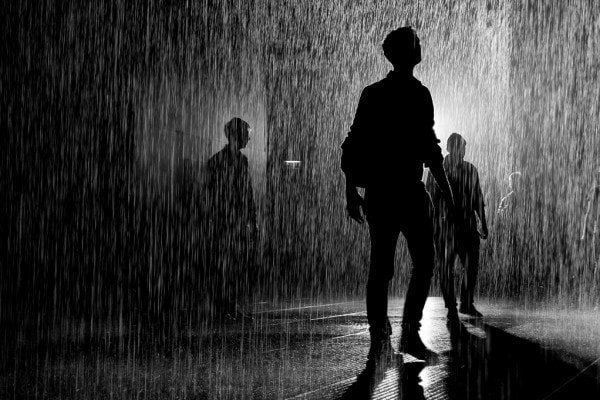
13. Keep your eyes open: urban photography is not only limited to taking photos on the streets of the cities, but on the contrary, they include everything that you can find on the road while you are in search of the perfect photo. Enter the businesses and bars, pay attention to the shop windows, observe the buildings and their architecture. Your next photo can be anywhere. Are you going to miss it?
14. Put yourself at the level: to prevent your subjects from appearing disproportionate, try to put yourself at the same level as the subjects you are photographing, unless it is clear that this disproportion is what you are looking for.
15. Don't miss a beat: Rhythm in photography is the rhythmic repetition of lines, shapes, and patterns. Rhythm photos are very pleasing to the viewer's eyes and invite them to browse the photos more carefully, following the rhythm. Take advantage of the rhythm to structure the image, that is, to arrange the elements within the frame and why not, it can also be the protagonist you.
16. Always tell stories: remember that photographs are as remembered for what they show as for what they don't. The messages they communicate and the sensations they convey are even more important than the image itself. If you want to achieve photographs that leave everyone speechless, don't forget to tell stories.
The best photographs are there, waiting for you to meet them. You don't have to travel thousands of kilometers to find it, perhaps it was always there, just around the corner waiting for you, with your camera, to see it.
The important thing is that you are prepared to be able to take it, wherever it is. Do not let your camera get covered in dust, the one who takes the photos is you.
I hope they have given you an incredible desire to go for a walk with your camera in search of your next best photo. Remember that it will always be there, waiting for you to find it.

